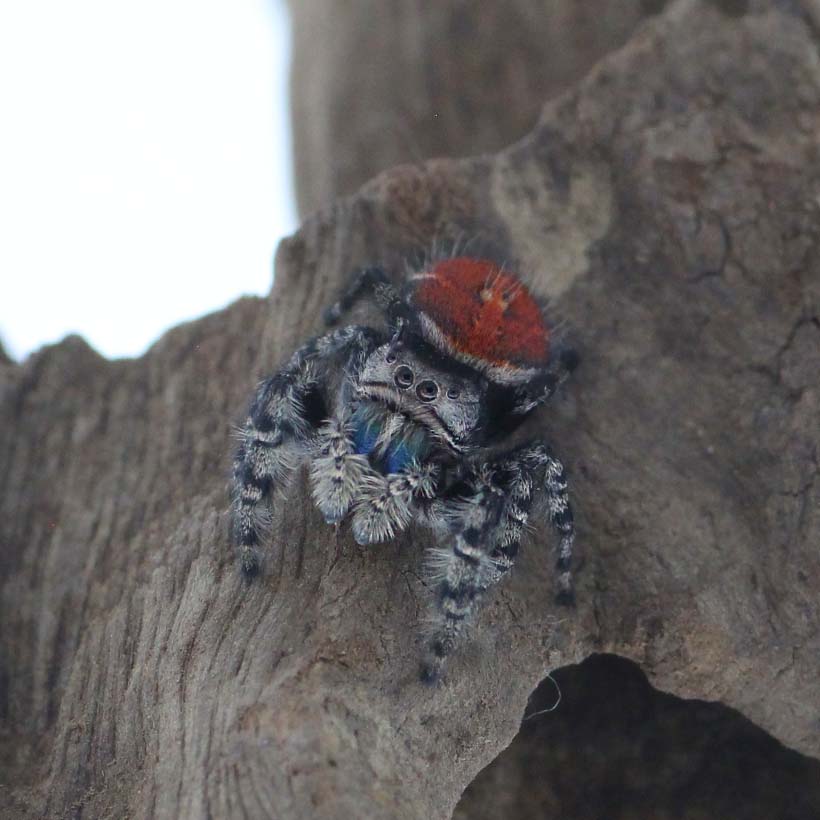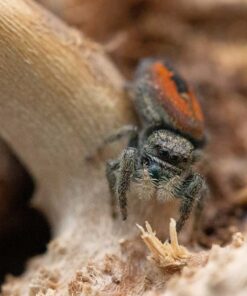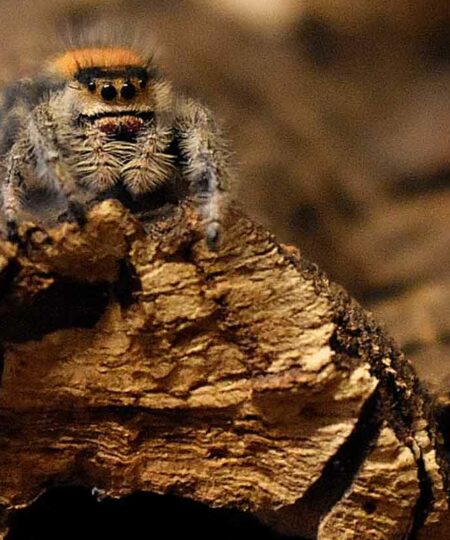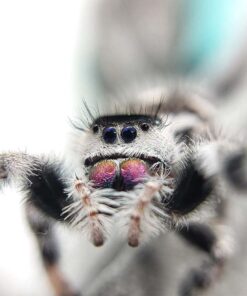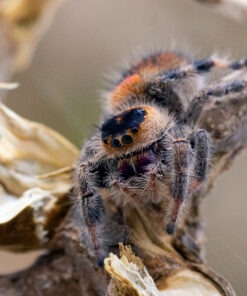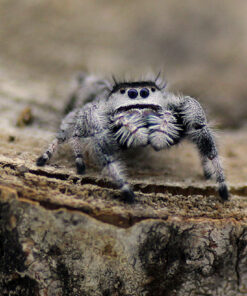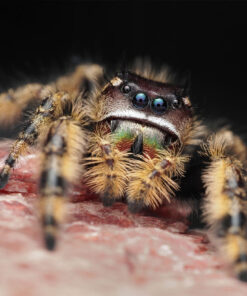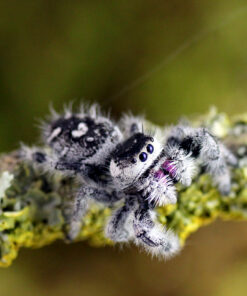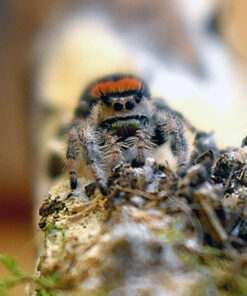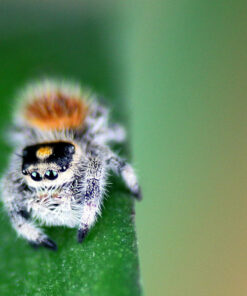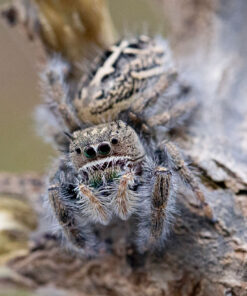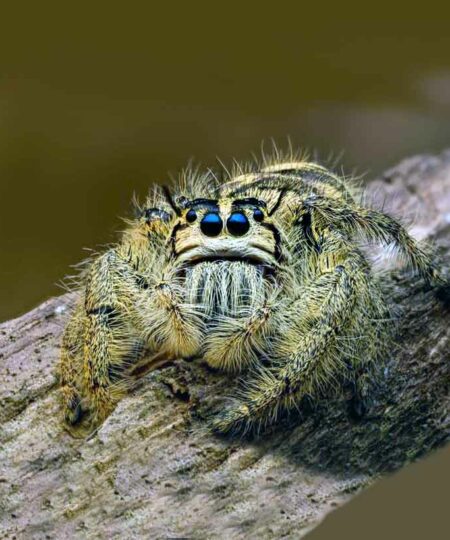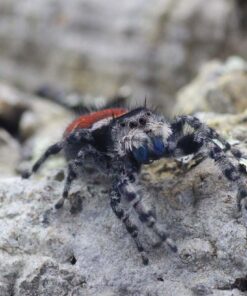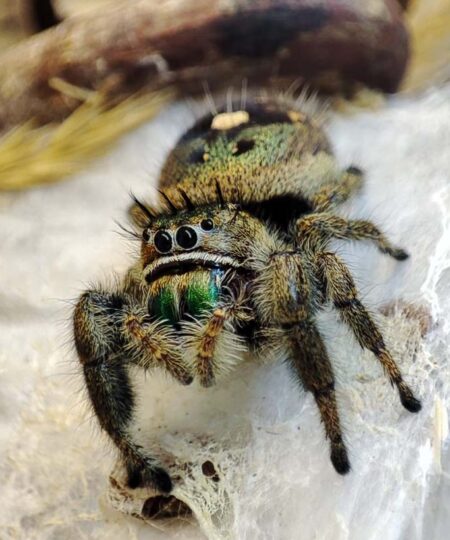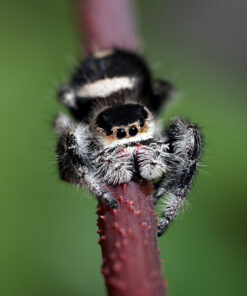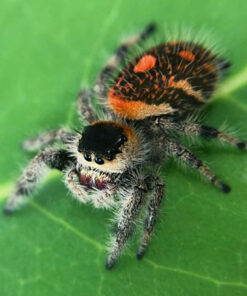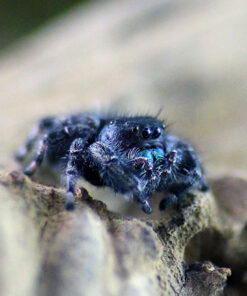Where did jumping spiders get their name from?
Jumping spiders get their name thanks to their ability to manage large jumps. They don't build catching webs, but hunt their prey. This is where their jumping ability comes into play. Watching the hunt is always a spectacle and one is always amazed at how quick of reaction such a spider can be. They prefer to eat flies and firebrats. These have a soft chitinous shell and cannot be dangerous for the spiders, unlike crickets.
Why do jumping spiders always look so cute?
There are more than 4,000 known species worldwide, although the Central European jumping spiders only grow to 5 to 8 mm. Therefore, because of their small size, they are rather uninteresting compared to the Central American species. Jumping spiders can see particularly well. They can adjust their visual acuity to different distances and change the direction of their gaze. At distances of up to 10 cm, the spider can distinguish shapes optically. The overlapping visual fields of the front side eyes enable spatial vision. Therefore, they always observe their surroundings very closely, which looks quite cute.
What is the keeping of jumping spiders like?
Jumping spiders are easy to keep and care for. They do not require much space and are also very undemanding in terms of climatic conditions and can therefore also be recommended for beginners. We offer different species in the category jumping spiders. You will find the special differences described with the respective spider. Our spiders are captive bred and not wild caught. They are food resistant and we offer all species only from a size of FH3. At this stage they are a good size to observe and they are absolutely stable.
